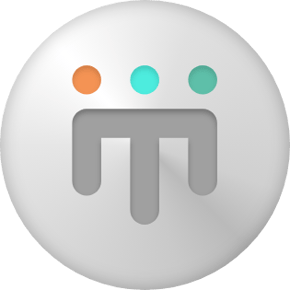So how do the Recruitment and Marketing Funnels compare?
Imagine you’re scrolling through your phone and see an ad for the nicest jacket you’ve ever laid eyes on! The promises are endless and you’re instantly hooked. You quickly research some reviews, visit their website, plug in your details and buy the product. Over the next few months, you continue to receive emails of sales, new releases and trending fashion. So as a result, you’ve proceeded to purchase another new pair of pants, shoes and a coat! As easy as that – you’ve become a lifetime consumer. This is the clever process of marketing.
Wouldn’t it be amazing if we could adopt a similar process for recruiting? Just imagine it! Riveting job ads across job boards, quality candidate applications, a smooth on-boarding process and a lifetime of happy employees. Does your Applicant Tracking System (ATS) understand that this could be a reality?
Let’s take a look at the candidate vs. consumer journey and see the benefits of recruitment automation throughout this process.
Recruitment Automation in the Candidate Journey
From listing the job ad to interviewing and recruiting a candidate – there are many stages in the recruitment journey. But where does this journey begin and end? We would argue that the journey for a candidate starts when they first see your job ad and ends only when they retire from the industry or die! Think back to when you made an online purchase – did marketers simply forget you as soon as you saw the ad or even made a purchase? No! They carefully monitored and ensured your process was easy throughout the sales process and retained you as a customer after you made the purchase.
This is exactly what top recruiters should be doing too! Remember the last time you offered a promising candidate a job, excited to have finally found someone who’s the perfect fit…..only to find that they had dropped off the face of the planet (or so it seemed). By automating stages of your recruitment process through a recruitment software platform – that dreadful drop-off rate could be non-existent. It is absolutely essential for recruiters to not just dust off their hands when an offer is accepted by a candidate – but to also think about the first day, week and month of work!
1. Attract
The first phase of the recruitment journey is where you advertise your job availability and sell your brand to potential candidates. As the beginning stage, it is one of the most essential parts of the journey as it’s where you gather your inital pool of candidates. At this stage you want to insure your applicants are completing their job submissions and that you are attracting the right kind of candidates. In sales; marketers use Key Selling Points and post ads to particular platforms to reach their selected target audiences. Similarly, recruiters can sell their brand and automate the posting of their job ad through a recruitment software platform.
2. Recruit
As soon as the application is submitted and received by a recruiter; recruitment automation can start to play an even bigger role. In other words – you’ve got to let the candidate know that you’ve received their application and that you care. Remember that applicants hate it when their application falls into the pit of a deep deep black hole floating somewhere in the universe – and when they don’t hear from you they think just that! This reflects badly on your business and may mean that the applicant loses interest in working for you and thus look to apply elsewhere.
3. Onboard
Onboarding is the process that ideally begins the moment you offer a candidate the job. So why is Onboarding so important if you’ve already found a promising candidate and offered them the role?! Here’s 4 reasons why Onboarding is an important part of making an offer:
a) There is a high chance that the candidate has more than one offer. Thus, making it easier for them to accept your offer can be crucial in securing them for a role in your company.
b) Until they sign their contract there is zero legal reason for you to keep them and for them to be loyal to your company.
c) Signing the contract is a lengthy and at-times painful process. Through easy contract customization and digital signing; the process becomes a whole lot easier. Digital sign technology would also create a sense of urgency to speed up the process through reminders to complete a contract.
d) Onboarding allows you to keep candidates all up to date at each stage in their process of accepting the job.
Now, just because a promising candidate accepts your job offer, does this mean your job as a recruiter is over? Think back to when you made an online purchase – after you paid, marketers still kept you up to date on sales and new releases. This process of retaining consumers should also be applied in the recruitment world as a way to nurture and retain new employees. Does your Applicant Tracking System (ATS) understand and cater to this?
4. Retain
The Retain phase is another huge opportunity for recruitment automation. It consists of induction, training, company updates, career development, promotion opportunities and many other activities that follow after the candidate accepts an offer. The initial week, month and year of a new employee are crucial for their growth and longevity in the business. Through the use of a recruitment software platform you could easily automate some or all of these activities. If your recruitment software does not consider this phase of the candidate journey, we suggest you adopt a free Applicant Tracking System (ATS) that does!
There has been so much investment in marketing funnel automation, but hardly anything in the area of Recruitment Automation! After considering the importance of all 4 stages in the candidate recruitment funnel – We ask why?!

